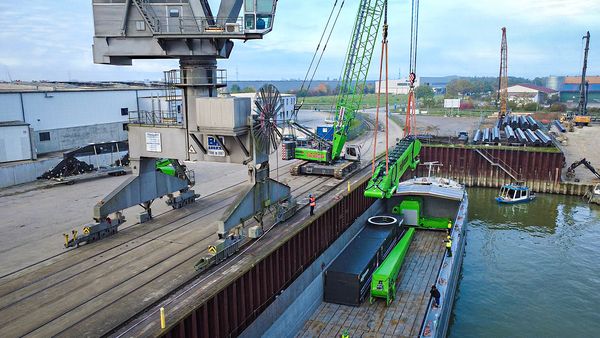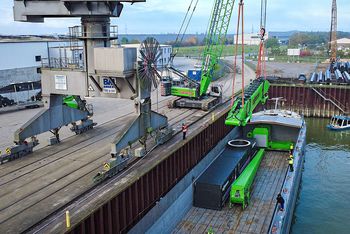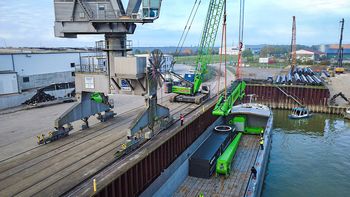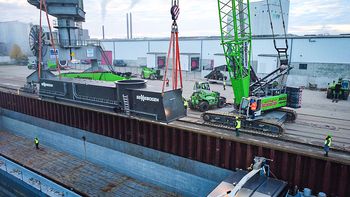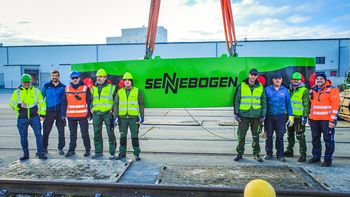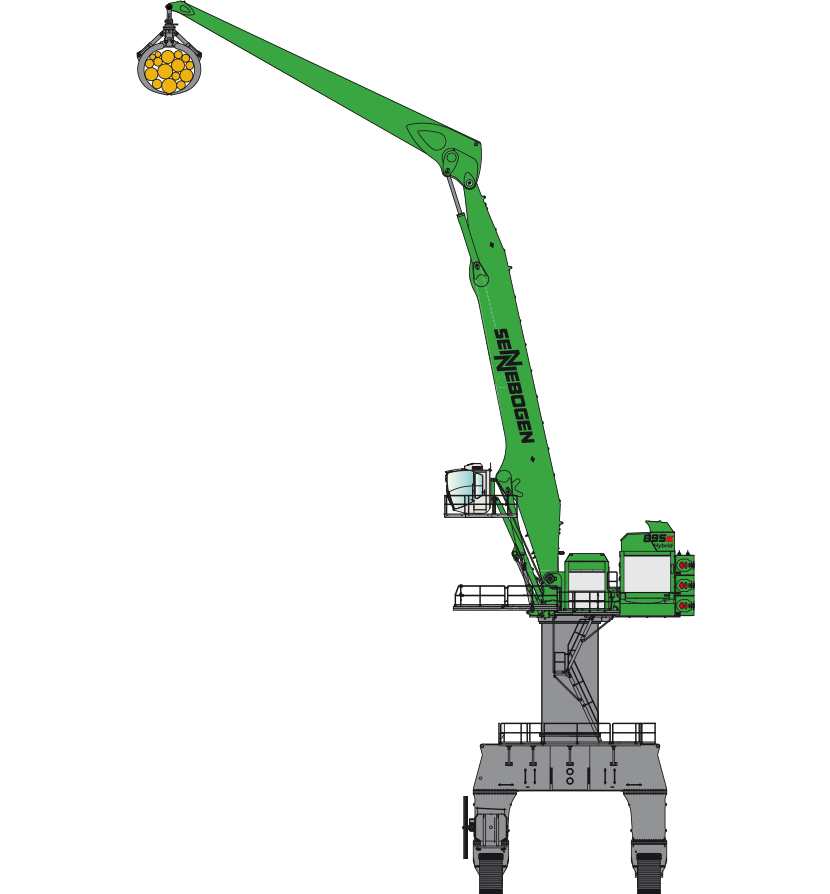Heavy-duty terminal at Straubing harbour loads 460 tonnes of harbour dredger
Last week, the world's largest and heaviest material handling machine ever built was loaded onto an inland waterway vessel at the port of Straubing-Sand. The SENNEBOGEN 895 E harbour dredger, weighing around 460 tonnes, will travel along the Danube in a climate-friendly manner to its destination: the Romanian port of Konstanza.
The future heavy goods terminal at the port of Straubing is still under construction. However, this does not mean that gigantic masses cannot already be loaded today. The mechanical engineering company SENNEBOGEN, which is based in the Straubing-Sand industrial area, has now not only installed the largest and heaviest port material handler in the world , but has also shipped it directly to the customer in Romania via the neighboring port in an environmentally friendly manner. From Straubing, the barge with the machine will travel more than 2300 km on the Danube directly to the Black Sea.
A lot of know-how required: in planning and loading
" Transporting such huge machines is always a logistical challenge . The planning for shipping by ship starts weeks in advance and has to be coordinated with the port, the shipping company and the freight forwarders involved. Not to forget the transportation to the port and the loading work itself, which can takea good 8 - 10 hours," reports Roland Hermann, Head of Customs and Foreign Trade Machine Shipping at SENNEBOGEN. The port excavator was dismantled into a few individual parts in advance for shipping. Nevertheless, the forwarder's 180 t crane and the permanently installed port crane had to transport components of up to 76 t and almost 21 m in length onto the ship in tandem.
"The tandem lift allows the weight to be distributed evenly and reduces the load on the cranes, but requires a lot of experience on the part of the crane operators. Attention must also be paid to the sequence and even weight distribution on the ship," explains shipping employee Martin Feiertag.
Transport by barge as an environmentally friendly alternative
Shipping by barge instead of truck proves to be significantly more environmentally friendly. The majority of the gigantic port handling dredger is transported on just one ship, whereas transport by road would require around 19 low-loaders. Road transport produces around 113 grams of CO₂ per tonne-kilometre, while an inland waterway vessel only produces around 34 grams on the same route. For the route between Straubing and Constanta, this leads to a reduction in CO₂ emissions of almost 60 percent - which corresponds to a saving of around 52 tons of CO₂ - a cost-effective and environmentally friendly alternative that SENNEBOGEN would like to make more use of in the future.
Machine in use
Press images
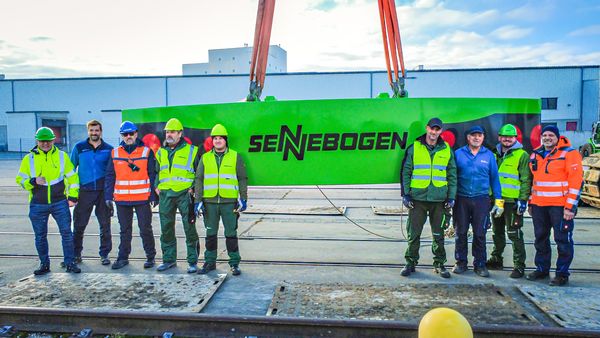
Press images
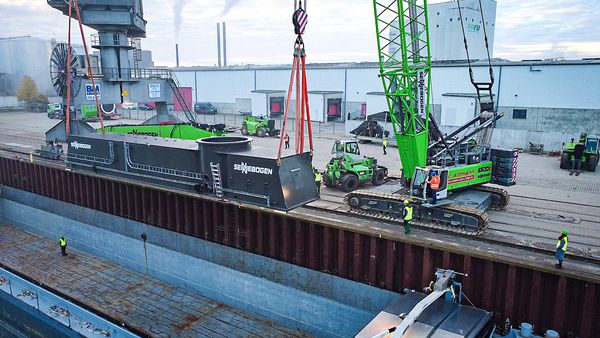
Press images
